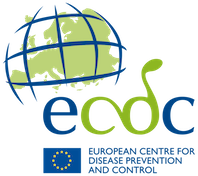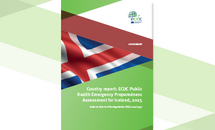Country report: ECDC Public Health Emergency Preparedness Assessment for Iceland, 2025
The aim of the Public Health Emergency Preparedness Assessment, as mandated in Article 8 of the Regulation (EU) 2022/2371 on serious cross-border threats to health, is to improve prevention, preparedness and response planning in EU/EEA countries through the implementation of recommendations following individual country assessments. As specified in the Regulation, each EU/EEA country will undergo an assessment every three years, with the first cycle of these occurring between 2024 and 2026.
This report presents the findings and recommendations of the first assessment conducted in Iceland. This involved a desk review of relevant documents, followed by a five-day country visit that took place between 2 June and 6 June 2025. As per the assessment methodology, all of the 16 capacities included in Article 7 of the Implementing Regulation (EU) 2023/1808 self-assessment template were assessed, with five of them considered in depth: Health Emergency Management (Capacity 6); Laboratory (Capacity 3); Surveillance (Capacity 4); Antimicrobial resistance (AMR) and healthcare-associated infections (Capacity 12) and Zoonotic diseases and environmental threats (Capacity 10).
Key findings
Iceland’s health system is a state-centred, publicly funded system with universal health coverage. The main bodies responsible for health policy, financing, planning and regulation are Parliament (Althingi) and central government via the Ministry of Health (MoH) and the Ministry of Finance and Economic Affairs (MoF). The MoH has major policy-making and executive authority, while its agencies – including the Directorate of Health (DH), Iceland Health (Sjúkratryggingar Íslands), the Icelandic Medicines Agency (IMA) and the Icelandic Radiation Safety Authority (IRSA) – are responsible for executing health policy, administration, and supervision.
The Health Services Act provides for the organisation of healthcare services, which are predominantly public. The Directorate of Health supervises healthcare services in Iceland, as per the Act on the Medical Director of Health and Public Health. The Chief Epidemiologist is responsible for disease control and preventive measures against epidemics, as required under the Act on Health Security and Communicable Diseases (Act (No 19/1997) and is accountable directly to the Minister of Health. Iceland is divided into seven healthcare regions for organisational purposes with a healthcare institution, which is responsible for providing healthcare within the region and separate funding to cover for certain administrative responsibilities. Landspítali University Hospital in Reykjavik is the country's largest university hospital, while Akureyri Hospital is the back-up hospital, as mandated in regulation no. 1111/2020. This role is currently under revision.
There is a strong collaborative culture within and across sectors, resulting in the rapid exchange of information and effective public health decision-making and action in response to various types of event. Such collaborations undergo frequent testing in response to natural events, which are common in Iceland. This has resulted in a strong and consolidated mechanism for preparing and responding to all-hazard incidents with an emphasis on natural disasters. The health sector collaborates closely with civil protection at all levels. Public health preparedness and surveillance are mostly coordinated at the national level, while response activities are carried out both regionally and nationally. These preparedness and response tasks and activities are less consistently executed within healthcare services, as they are not always perceived as part of the tasks of healthcare providers and regions do not have enough human resources to assign directly to public health tasks. Furthermore, some roles and responsibilities in the country’s public health infrastructure could be better defined and formalised to ensure clear accountabilities and avoid overlapping. Ways to improve the public health infrastructure of Iceland include:
- Integrate public health requirements in the routine healthcare provision process by involving district physicians more in meetings/seminars/simulation exercises, sharing of surveillance feedback, acknowledging the public health impact of their work, and planning of dedicated budget for their public health activities.
- Increase capacities for public health preparedness and response at the Chief Epidemiologist office, and the overall epidemiological workforce (e.g. by participating to EU training activities such as EPIET, EUPHEM, or MS-Track).
- Assess which of the ongoing informal collaborations require to be formalised in the pandemic preparedness plan to ensure business continuity, resilience, and timeliness across sectors.
- Ensure that roles and responsibilities for key public health functions at national and local level are formalised, including for surveillance, prevention, preparedness, response, quality assurance and evaluation.








